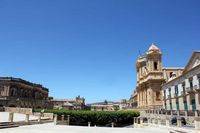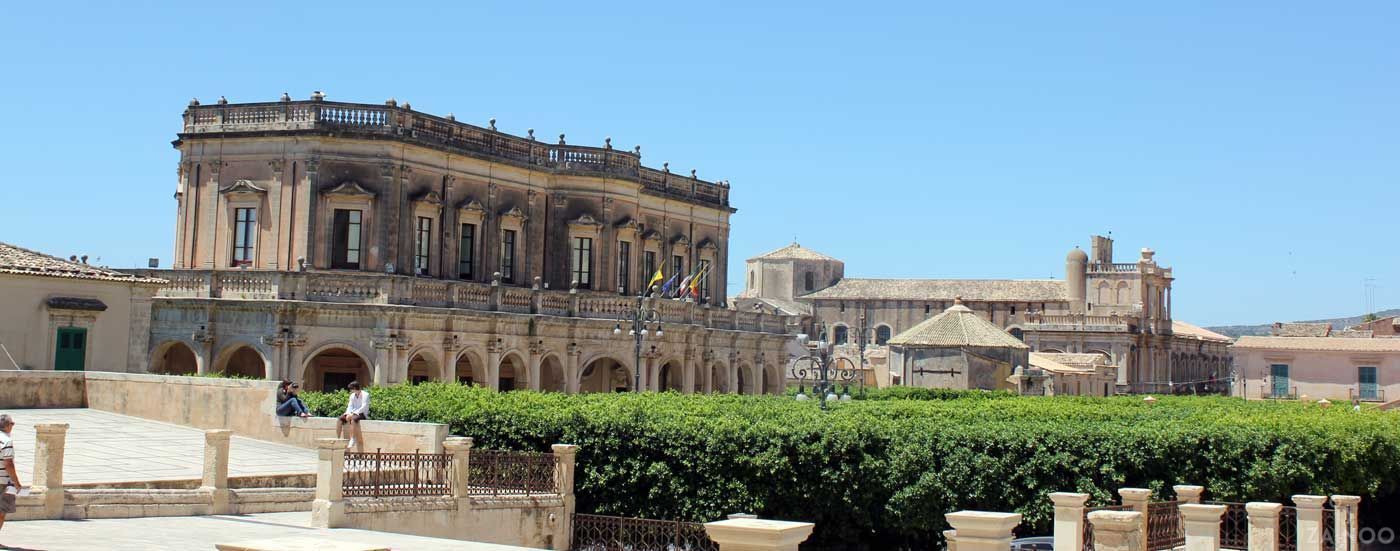Noto
Place of Interest
Noto
Sicilian Baroque town and UNESCO World Heritage Site
Noto is not only one of the most beautiful Baroque cities in Sicily, but also a UNESCO World Heritage Site and one of the highlights in southern Sicily. Originally, Noto (also known as Neetum under the Siculi) was located north of the present city in the valley of the Arsinaro river and was the capital of the province of Syracuse until 1865. After it was completely destroyed by a major earthquake in 1693, it was rebuilt. The architects Rosario Gagliardi, Paolo Labisi, Antonio Mazza and Vincenzo Sinatra created the map of the new city in 1703, thanks to whom Noto owes its appearance today. Based on a rectangular street grid a completely new baroque city was created, which still fascinates its visitors with a great atmosphere and a lot of flair.
Attractions in Noto: Along the Corso Vittorio Emanuele
The town is best entered in the west over the Giardino Pubblico and the Corso Vittorio Emanuele. You will pass the Porta Reale, the Franciscan Church of St. Francis of R. Gagliardi and the Order of Santa Chiara Church and reach the Piazza del Municipio with the City Hall in the Palazzo Ducezio of V. Sinatra and the Cathedral. The Jesuit church Chiesa dell Collegio is located on the left side at the end of the Piazza del Municipio.
The Corso Vittorio Emanuele finally ends in the Piazza XIV Maggio, where a Hercules fountain and the Church of San Domenico with its splendid facade, the drum dome and the three-nave interior is worth a visit.
The cathedral Santi Nicola e Corrado
The cathedral Santi Nicola e Corrado is the central building of the Piazza del Municipio and rises over a beautiful staircase above the place. It was completed in 1770 and attained the rank of a bishop’s church in 1844. The magnificent twin-towered façade and the beautiful portal with scenes from the life of Saint Corrado deserve particular attention. The Urn of the saint is kept in the chapel in the right aisle. The imposing three-nave interior is dominated by a central dome, which collapsed in 1996 and was rebuilt again in 2006.
The upper town in Noto
Turning left from the front of the cathedral, you will see the bishop's palace and the monastery church of Santissimo Salvatore. If you walk behind the cathedral into the upper town, you will reach the Palazzo Villadorata with its elaborately carved balcony supports and the Church of Monte Vergine. Over a steep alley next to the Palazzo Astuto you will reach the Piazza Mazzini in the upper town. Here it’s especially worth visiting the Church of the Crucifix. The church was built in 1715 and impresses with a beautiful façade and a sophisticated portal, whose columns are supported by two lions. Inside you will find a medieval lion right before the first pillar and on the altar of the right transept there is a marble Madonna della Neve by Francesco Laurana from the 15th Century.












Tweet